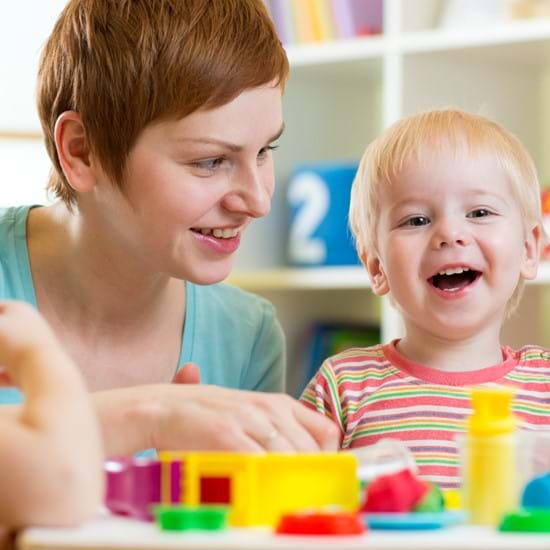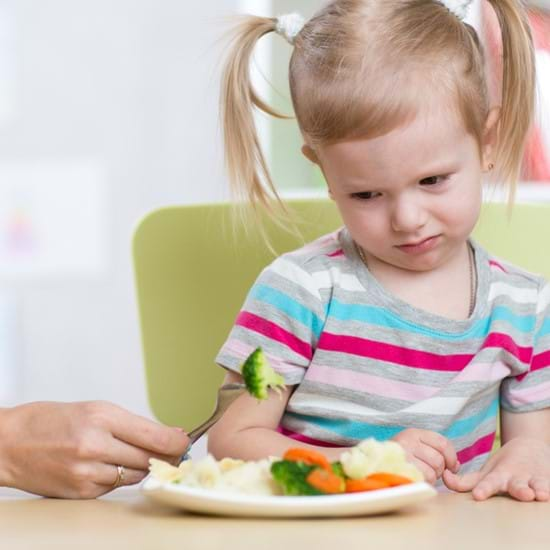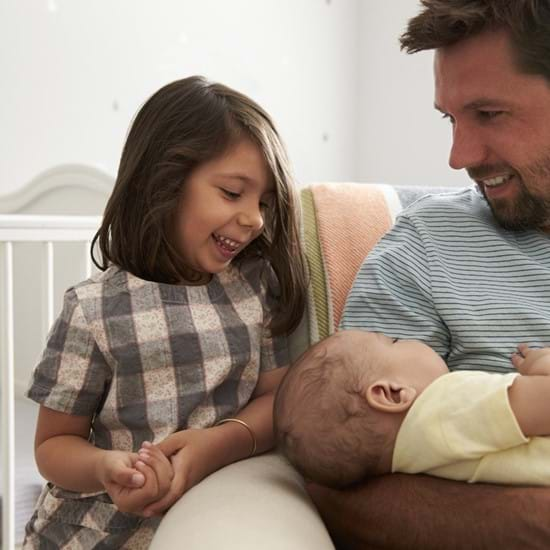
Tackling the Playroom Chaos – Step 2: Organize

Written by: Joëlle Cloutier
Like you, I’ve faced many times the war zone my daughter had left behind after playing (too) silently in her room for a few minutes. So, I came up with tricks to incorporate simple organization systems that make the playroom an inviting space where autonomy meets creativity. In this article, I’ll give you 4 tips to organize your child’s playroom to make it an appealing, convenient, safe, and stimulating space.
Organize With Visual Cues
I quickly realized it’s easier for my daughter to put objects back where she found them when they each have a dedicated space. A good strategy is to group similar games or toys into bins which are placed in a storage system or bookcase. Then, you can simply label the bins according to your child’s age. For younger children, opt for small images that are easy to recognize and put them on the front of the storage bin. You could even take pictures of your child’s toys to create your own labels. For preschoolers, combine the images to simple words; this way, your kids can learn while organizing. Personally, since my daughter is old enough to go to school, I only put words on the labels to encourage her to read to know where her games are stored.
Also, a simple tip is to take a picture of the playroom (or bookcase with your child’s toys) once it’s organized and place this picture on the door as a reference. As any good habit develops with repetition, it’s essential you participate in the first tidying sessions to show your child how to proceed: “Mommy found a giraffe figurine and a rhinoceros figurine. Do you see the bin with a picture of animals, so I can put these away?”.
Develop Autonomy With Accessible Games and Toys
Children’s creativity and sense of initiative develop when they’re able to play on their own. To help your child become more independent, you should make sure you organize games and toys so they’re within reach. A big box of building blocks will be more appealing if it’s directly on the floor in a place where your child doesn’t need to move it. Avoid as much as possible piling up heavy games that require your help. In addition, when you’re choosing storage bins, make sure your child is able to open the lids. Personally, I opted for bins without lids; this way, my daughter isn’t hindered when she wants to play alone.
Create a Safe Environment for Peace of Mind
By making safety a priority when organizing the playroom, you’ll have peace of mind when your child plays alone in it. Start by making sure high furniture like cabinets and bookcases are secured to the walls. Your young explorers might get the idea to climb up these “tall mountains” when role-playing. For younger children, it’s a good idea to install a carpet that cushions falls and corner guards to avoid them bumping their head on furniture. Place heavy toys in bins on the floor or on the lowest shelves of your bookcase and place light toys like stuffed animals on the highest shelves (while remaining within reach). If you think your children aren’t old enough to play alone with a specific toy, like small blocks that can fit into their mouths, put it out of reach and only take it out when you’re there or once your little ones are old enough to play with it on their own.
Depending on your child’s age and level of independence, you can also establish safety rules. My 7-year-old daughter has a painting station set up in her playroom. She knows she can use it alone but that she must tell me beforehand. She puts on a smock and lays a sheet on the floor when she creates her artworks, which spares me from having to wash her clothes and the floor afterward. In addition, she only has nontoxic, washable paint at her disposal; acrylics and toxic materials are stored in a cabinet she can’t reach, and she knows she must be with an adult to use them.
Set Up a Stimulating Playroom That Will Grow With Your Child
Parents sometimes tend to overfill the playroom, hoping all the activities available will stimulate their children and encourage them to play alone more often. But you must be careful not to get the opposite effect. It’s important that the games and toys available be truly adapted to your children’s age: an activity that is too complex could discourage them. To pique their interest, you could set up a toy rotation. This way, a toy your children haven’t seen in a few days might become their favourite again. For older children who are comfortable with decluttering, you could establish a “one more, one less” rule where they have to get rid of a toy when getting a new one. You can even try putting a donation box in the house: you’d be surprised to see your children get rid of toys they don’t find interesting anymore! You can also go for toys that can be used in different ways and that stimulate creativity.
Finally, let your children help organize the playroom and guide them in the tidying process so they associate positive experiences with that room. Organizing is a skill your children can learn through imitation, repetition and encouragement.
If you need advice to optimize how you organize your home, keep your eyes peeled for our upcoming articles that will help you simplify your day-to-day and make room for what really matters to you.
Joëlle Cloutier, home-organizing consultant
@joelleorganisation
facebook.com/joelleorganisation
www.joelleorganisation.com

Tackling the Playroom Chaos
Step 1: Declutter


